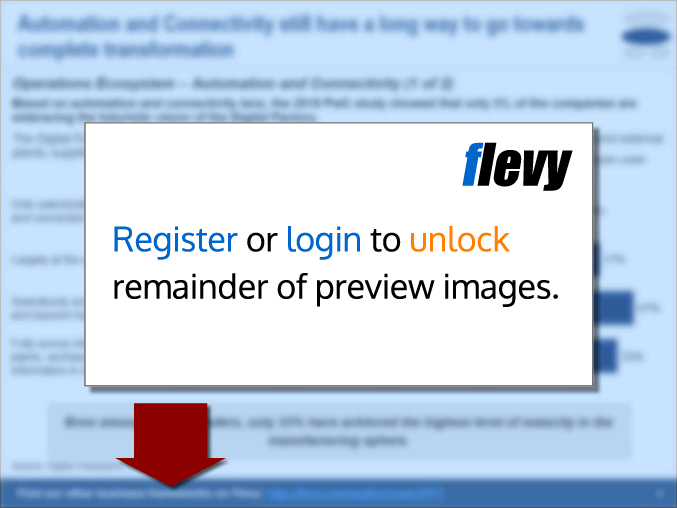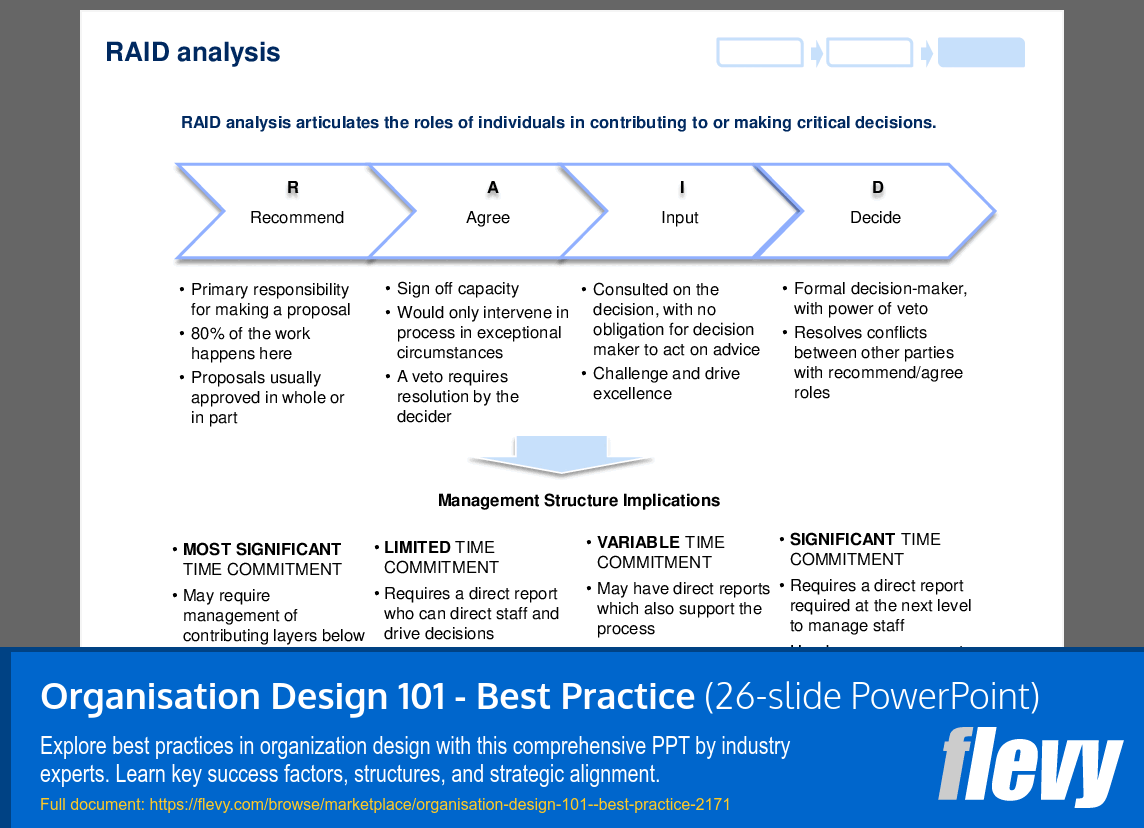Organisation Design 101 - Best Practice (PowerPoint PPT Slide Deck)
PowerPoint (PPT) 26 Slides
ORGANIZATIONAL DESIGN PPT DESCRIPTION
The objectives of this document are:
• Explain organisation design in relation to the other attributes of an organisation, such as its people and strategy
• Outline the key success factors in designing an organisation structure
• Explain the high level process and supporting tools
Content:
• Objectives
• Attributes of an organisation
• Organisational structure
• Key success factors
• Design process
• Develop strategy
• Design vertical structures
• Design horizontal processes
• Appendix: Organisational Structure Palate
This PPT delves into the eight critical attributes of an organisation, including shared values, vision, strategy, core capabilities, structure, systems, and style. It provides a comprehensive framework for understanding how these elements interplay to create a cohesive organisational design. The insights offered are grounded in practical examples and actionable steps, making it an indispensable resource for executives aiming to optimise their organisational structure.
The design process section breaks down the steps necessary to develop a winning strategy, design vertical structures, and implement horizontal processes. This ensures that the organisational design is aligned with the overarching strategy. The document also includes tools like the Business Definition and RAID analysis, which are essential for identifying and developing the necessary horizontal processes within an organisation.
The document also explores various structure types, such as functional, product, market, geographical, and process-based structures. Each type is discussed in terms of its overview and selection criteria, providing a clear understanding of when and how to implement each structure. This level of detail ensures that executives can make informed decisions about the most appropriate organisational structure for their specific needs.
Got a question about the product? Email us at support@flevy.com or ask the author directly by using the "Ask the Author a Question" form. If you cannot view the preview above this document description, go here to view the large preview instead.
Source: Best Practices in Organizational Design PowerPoint Slides: Organisation Design 101 - Best Practice PowerPoint (PPT) Presentation Slide Deck, P-Square Partners
ORGANIZATIONAL DESIGN PPT SLIDES
This document is available as part of the following discounted bundle(s):
Save %!
P-Square Partners Best Selling Consulting Frameworks & Tools
This bundle contains 7 total documents. See all the documents to the right.











